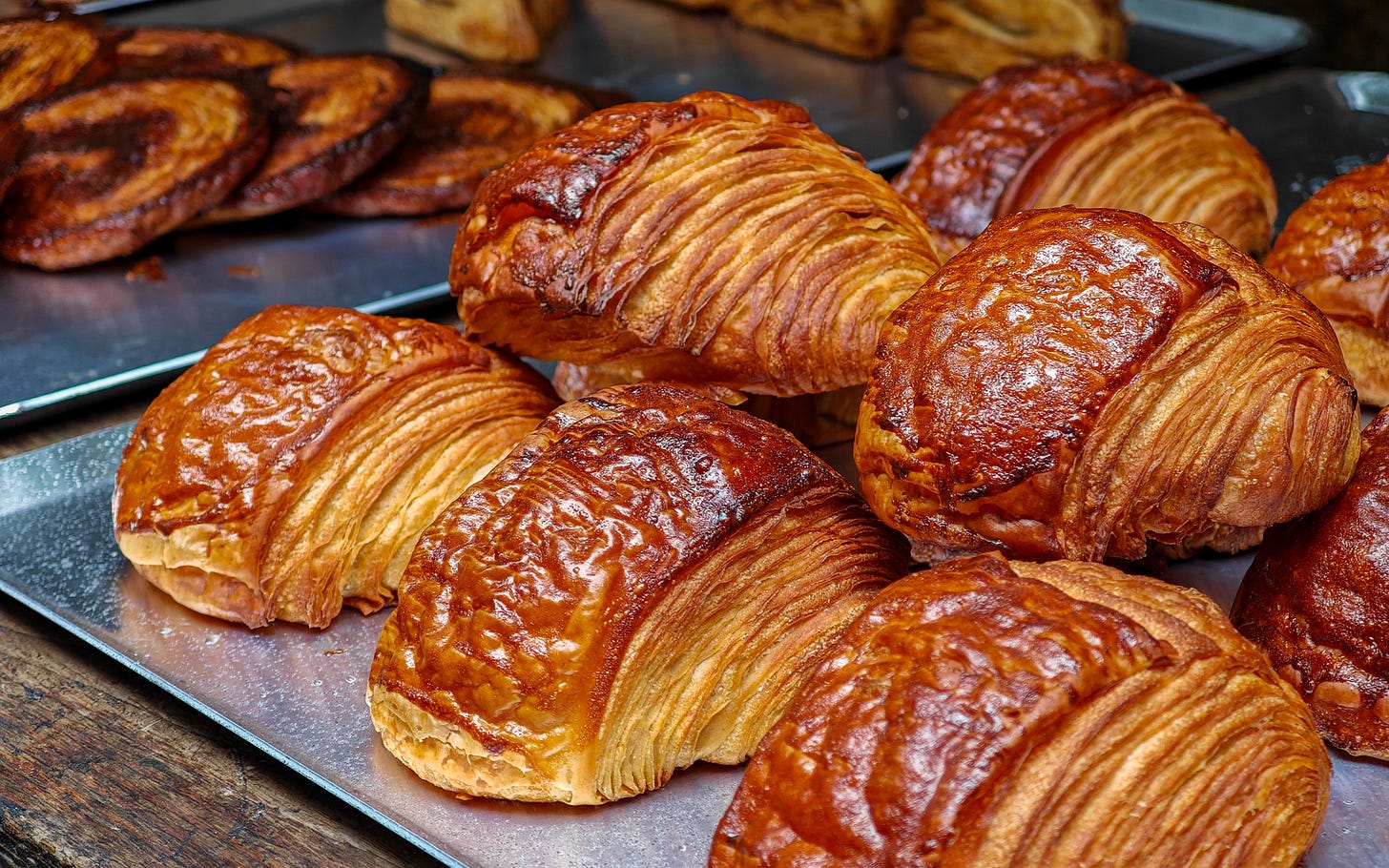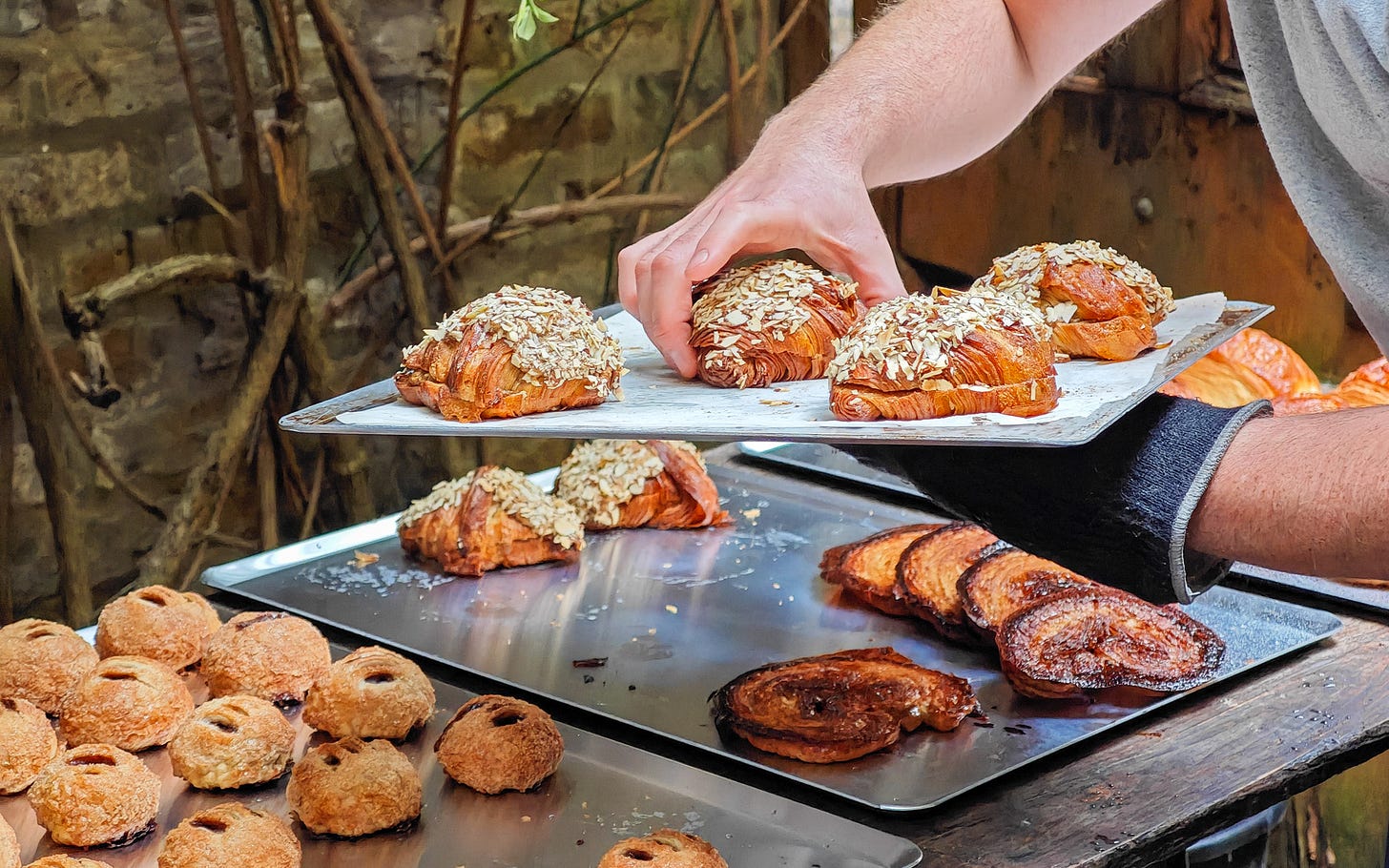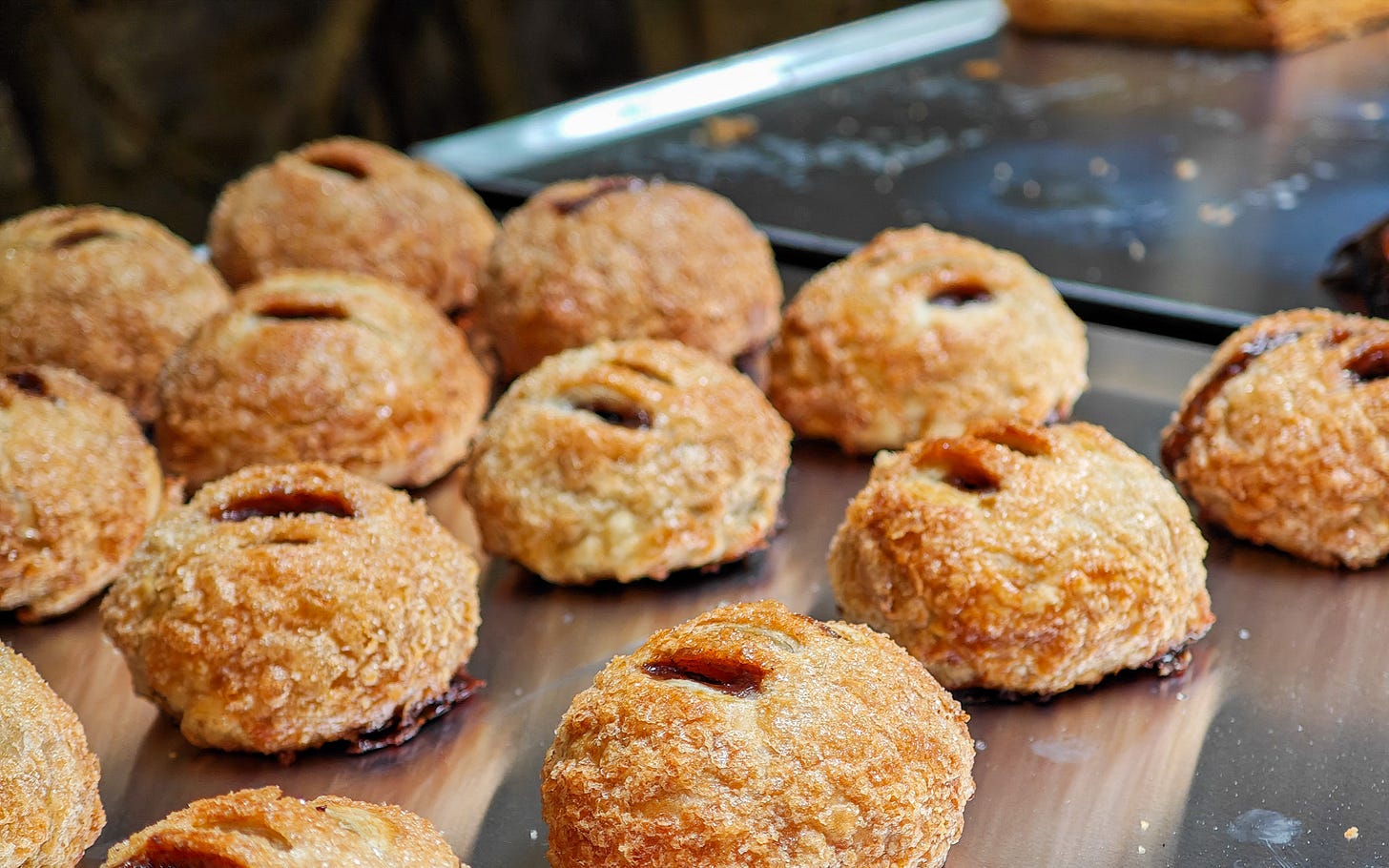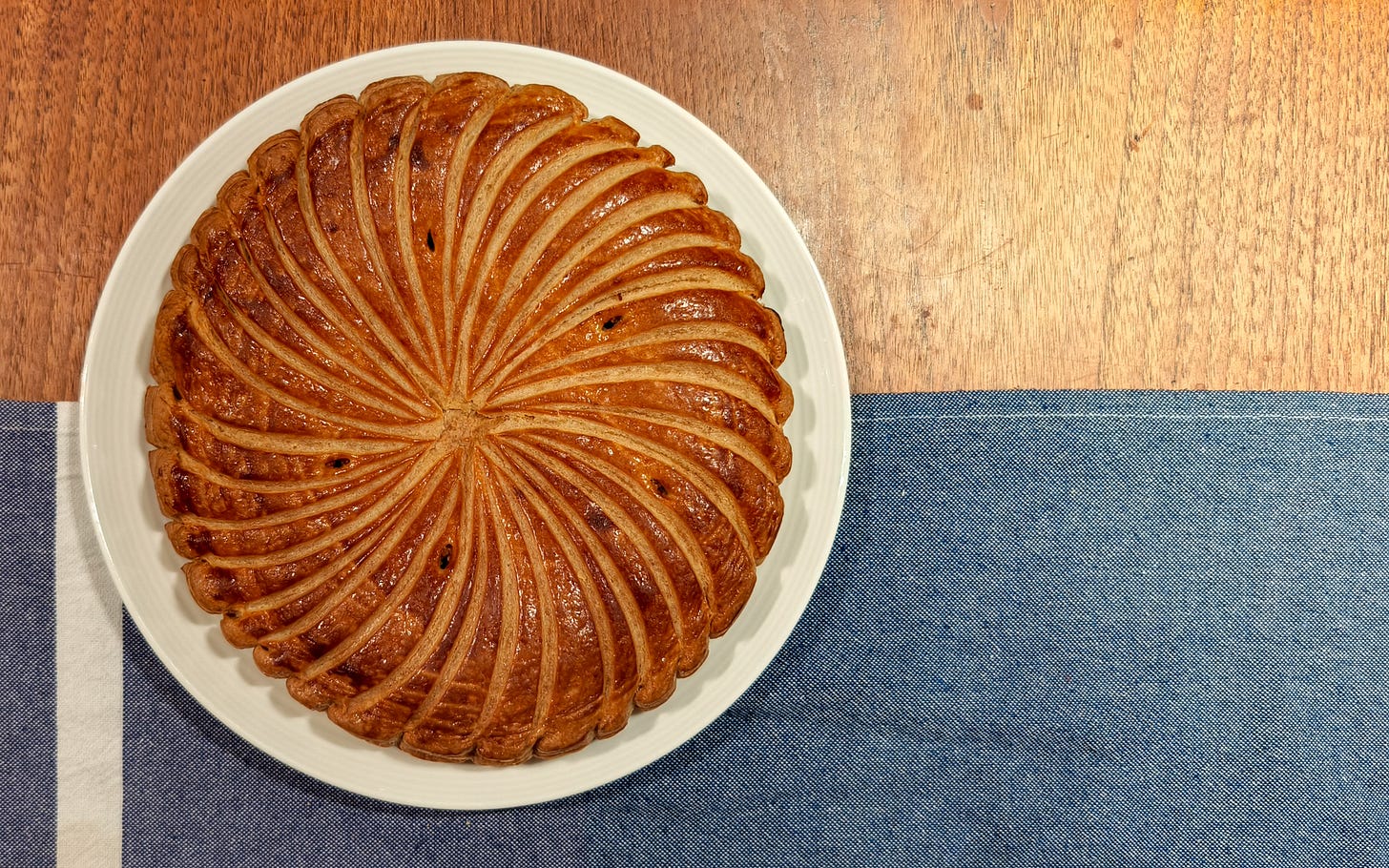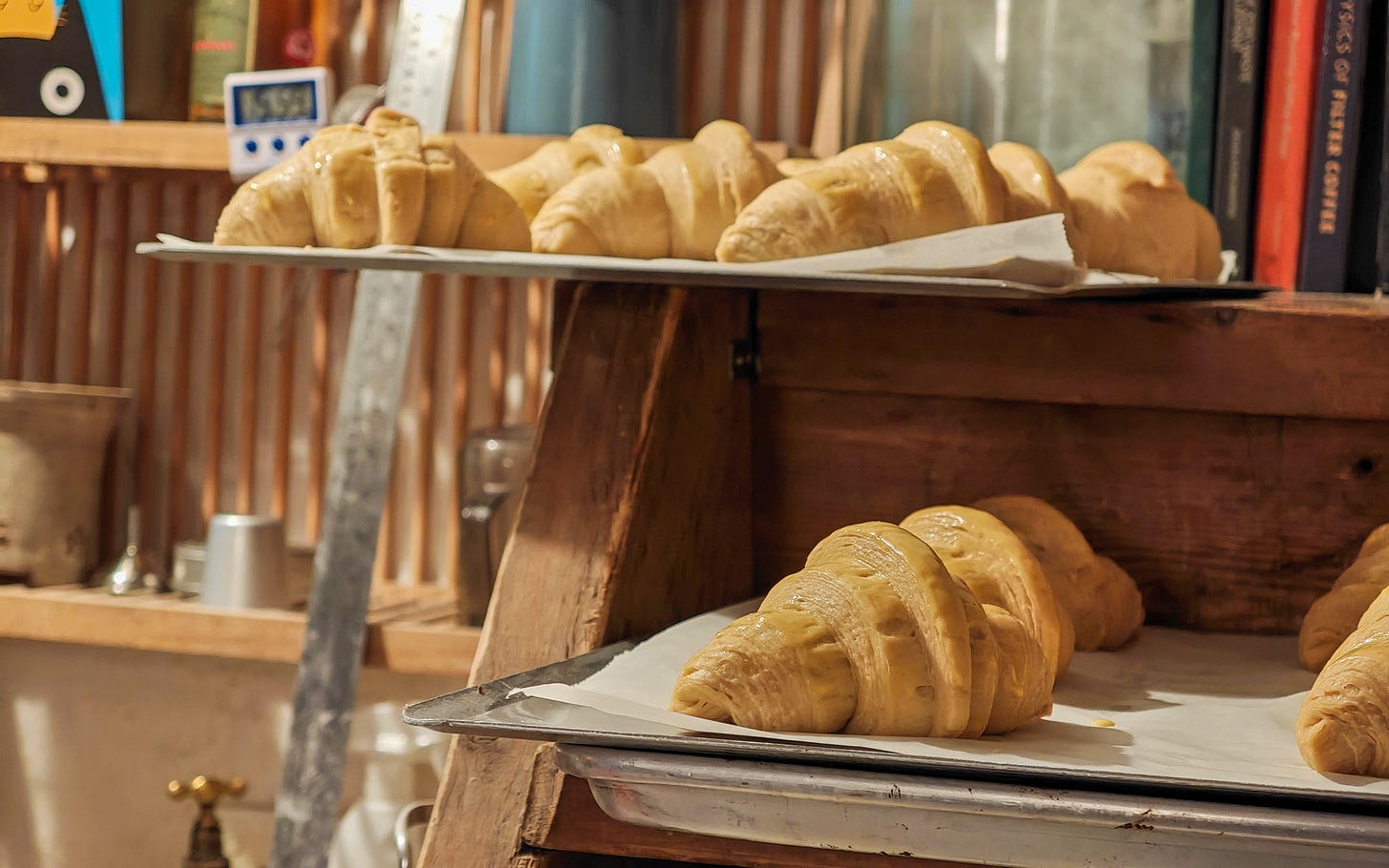I’ll admit, I’m a sucker for a micro-bakery. After writing about Lucky Yu a few weeks ago, I knew it was only a matter of time before I’d turn to Populations. Luckily, baker George Fuest obliged by announcing his first bake day in some months, just in time for me to write it up.
If you remember Lucky Yu, then bits of this will sound familiar. Fuest runs Populations on the side, out of his home, announcing bake days in advance on Instagram (and direct blasts to a WhatsApp group), with online pre-orders to secure the goods.
Fuest is a little less regular than Lucky Yu’s Hai Lin Leung - by my count there have been just three bake days so far this year - but that’s partly because the rest of the time you’ll find his work on the counters at local coffee shops Rosslyn and Nagare, both of which are well worth a visit for the coffee alone, nevermind easy access to Fuest’s baking.
Each Populations drop also has a narrower focus, whether on a single pastry or a small selection tied to a specific pastry style or seasonal theme - think hot cross buns at Easter, or mince pies in the run-up to Christmas.
The bigger difference, though, is that what you’ll find available to order from Populations is altogether more traditional than anything Lucky Yu puts together, but no worse for it.
Take this latest bake, the first where Fuest allowed customers into his Spitalfields kitchen to pick up their pastries, rather than handing them off at the front door. There to greet us in the cramped courtyard that separates Fuest’s kitchen from the rest of the house was a table heaving with viennoiserie, but all of familiar stripes: gently arching pain au chocolats, glossy palmiers, crisp almond croissants still warm from their second visit to the oven.
Nothing here bucks expectations, nothing pushes boundaries or reinvents the rules. These are age-old pastries that stand out purely and simply for the quality of the baking, which frankly belies the fact that Fuest is almost entirely self-taught.
The almond croissant was as crisp and rich as any I’ve had, the pain au chocolat pillowy soft. The palmier proved a welcome surprise; I can’t say one has ever truly grabbed me before, but the textural layers here proved perfect, a sugary shatter followed first by the pastry’s crunch and then by its invitingly soft inner layers, leaving only a buttery aftertaste to linger on the tongue.
The most unusual pastry on the table is actually one of the most old-fashioned: a tray heaving with eccles cakes, dense pucks of sweet currants packed tight into flaky pastry, a rich brown ichor oozing out into candied puddles. I’m not sure where else in London even makes these apart from St. John, which shares Populations’ centreing of the classics. This is heavier than I remember the restaurant’s being, but that only serves to slow me down slightly. I eat it with cheese, as I know I ought, though suspect the northern Italian smoked number in my fridge right now brings something different to the table than the traditional slab of Lancashire.
If Populations sounds familiar, I have written about it before, albeit briefly, from my first visit to the bakery earlier this year. Fuest’s galette des rois was by far my favourite from a focussed effort to eat them through January, a thick cake of frangipane bordered by delicate layers of inverted puff. When I think about galettes rolling round again in a few months, it’s this that I look forward to the most, and deliberate only over whether to give into my gluttony and order a whole tart once again.
I wouldn’t quite say that his hot cross bun was my number one - I remain a ride-or-die for Pophams’ croissant-based reinvention - but I can’t deny that it was a thing of beauty, perfectly proportioned and enriched by the decision to use exclusively stoneground flours.
That’s far from exclusive to the hot cross buns, and it doesn’t take long perusing the Populations Instagram feed to realise that the man’s a bit of a nerd about wheat. Even the bakery’s name is a nod - population wheats are genetically diverse crops that form an alternative to factory farmed monocultures. They’re less consistent, but more interesting for it, and naturally resistant to pests and diseases too. Fuest prioritises these independent wheat suppliers, using it stoneground when he can, which preserves more of the grain and thus more of the flavour.
I’ve written before, I think, about how over the last year or so I’ve come to appreciate sweet pastries that don’t limit themselves to simple white flour, and there’s that hint of the wholemeal to almost everything Fuest bakes, but it stands out especially in the simple croissants. It’s there in the deep gold hue of the outer crust, the slight speckles on the nested layers rippling through the body, the rich flavour that defies any temptation to sully this with a spread. This is the second best croissant I’ve eaten all year, and I don’t say that lightly.
It’s also emblematic of Populations as a whole. A simple thing, done well, produced using heritage grains and stoneground flour in a Spitalfields kitchen that’s probably a little too small for the job. This croissant is why you should join the Populations WhatsApp, stay tuned for the next chance to pay Fuest a visit and pick up a pastry. Not because there’ll be anything you’ve never eaten before, but because if you’re lucky, there’ll be something old that somehow feels new again.






